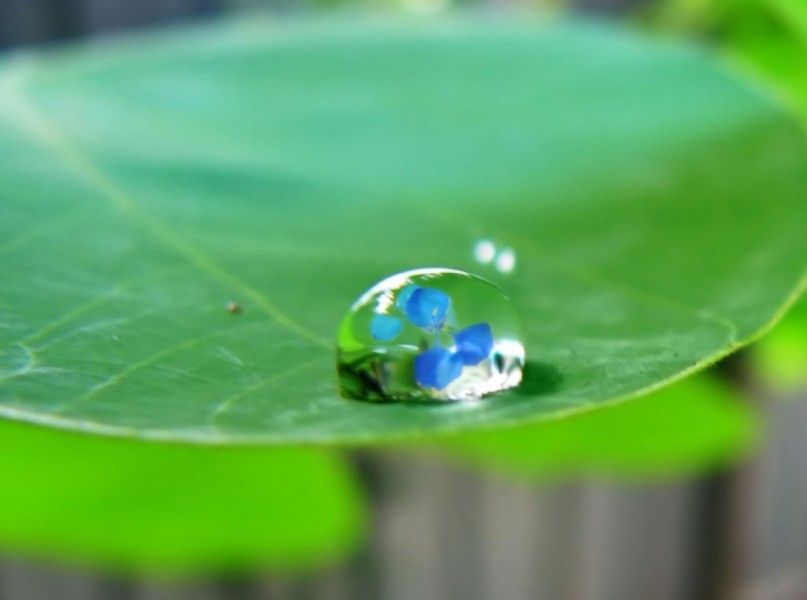Editor’s note: Fred Greguras is an attorney at Royce Law. This article originally appeared on their blog.
I recently became good friends with my water meter once I found it and cleaned the dirt off its face. This friendship was prompted by a water leak that made my bill go through the roof. There was no surface indication of the leak. I don’t pry the lid off the concrete container and manually check the water meter on a regular basis. Do you? Someone from the water company has to do that on a monthly basis to read the meter to determine my bill.
Since I live in the Silicon Valley in California and given our extended drought, I thought surely there is a better way to track water usage so we can identify problems sooner and conserve water as required. I needed an Internet of Things (IoT) application, a smart water meter that I can read online on the utility’s web site. I learned there is a pilot program of smart meters and related technology that recently rolled out in San Francisco. Water consumption is measured hourly and data is transmitted on a wireless basis to the utility four times a day. Both the utility and customers can track use. Currently, however, less than 10 percent of California customers are equipped with such smart devices. Sacramento and other cities are also beginning to introduce such devices but implementation is slow.
What is the Internet of Things?
The IoT is a system of technologies which can monitor the status of physical objects, capture meaningful data, and communicate that data over a wireless network to a software application for analysis on a computer in the cloud. Objects can be electronic devices such as a water meter, organisms or a natural part of the environment such as an area of ground to be measured for moisture or chemical content. A smart device is associated with each object which provides the connectivity and a unique digital identity for identifying, tracking and communicating with the object. A sensor within or attached to the device is connected to the Internet by a local area connection (such as RFID, NFC or BTLE) and can also have wide area connectivity. Typically, each data transmission from a device is small in size but the number of transmissions can be frequent.
Each sensor will monitor a specific condition or set of conditions such as vibration, motion, temperature, pressure or water quality. More applications have become feasible because the cost and size of such devices continue to decrease and their sophistication for measuring conditions keeps increasing. Cisco predicts that 25 billion devices will be connected in the IoT by 2015, and 50 billion by 2020.
For example, at home I would need a smart water meter (device) that generates data about usage which is communicated wirelessly to the utility for the software on its computer to analyze the data and report results on the web site for me to view. In the SF pilot program, a customer can view the data as it comes in, as well as compare their numbers with past use and city averages. The usage numbers should eventually alert me to a leak but water pressure could also be measured with another device which could identify a leak immediately, rather than letting water leak and be wasted until unusually high usage is clear. To find the location for repair, however, I would need to add sensors to measure pressure at various locations in my water system. The sensors would be connected to data analytics software in the cloud that would analyze the data transmitted in order to identify the location of the leak between two sensing points in my water system. This is a much more complex application than simply tracking water usage and illustrates the importance of the software applications needed in order to make sense of the transmitted data.
Can the IoT Help Solve the California Water Problem?
The IoT can’t make it rain or snow or fix leaky pipes but it can help the supply problem by making water usage more efficient and less wasteful, particularly in places where water is scarce. The IoT can also help water be transported to the point of need with greater precision. The universe of water IoT systems can be divided into infrastructure, governmental, business and consumer.
The water infrastructure IoT will help improve a utility’s water quality, supply, treatment, transportation and storage facilities such as reservoirs. The priority for action should be to deploy the IoT at the infrastructure level since the water savings will be the greatest and action should be the fastest. A utility should be able to justify the expenditure on the water savings particularly on the basis of planning for scarcity. State and local governments can save money and also have a major impact on supply by implementing the IoT for buildings and other uses like landscape irrigation. An IoT water management system for a large building or office park can help the manager monitor and manage water use more efficiently. Water cost savings and forced conservation will help drive adoption by businesses (including California’s important agricultural industry) and consumers but they will be looking for a clear return on investment.
A utility can use an IoT system to remotely determine the status and working condition of equipment (open or closed, on or off, full or empty, etc.). A gate can be opened or closed or a pump turned on or off remotely to adjust the flow of water through a water transportation system. Pumps, gates and other equipment with moving parts in the water infrastructure can be monitored for vibration and other indications of failure. If a water pump is about to fail, the utility can be prompted to repair or replace it. An IOT-enabled water treatment plant can report if its filters are clean and functioning properly. The IoT can measure water pressure in pipes to find leaks faster in the water transportation system or the presence of certain chemicals in the water supply and maybe even organic contaminants like the ecoli which was recently discovered in the north San Jose water supply.
Agriculture consumes about 40% of the freshwater available in California with a large amount being wasted by leaky irrigation systems, inefficient field application methods and the planting of water intensive crops in the wrong growing location. The IoT has great potential to make water use smarter for the agricultural industry particularly in irrigation efficiency.
Another focus for water savings should be landscape irrigation in parks, medians and elsewhere. This is a major use of water in cities. Nationwide, it is estimated to be nearly one-third of all residential water use and as much as half of this water is wasted due to runoff, evaporation or wind. An IoT landscape irrigation system is available in the market for public or private use which applies sophisticated data analytics to a wide variety of objects. Current weather data is combined with sensors for moisture and heat and other data such as the slope of the land, type of soil and the relative exposure to sunshine at a particular time.
Legal Issues
IoT systems need to be designed and implemented with adequate security and privacy protection.
The threat to security and privacy may not be recognized to be as significant as in other types of networks since IoT devices have limited functionality and connectivity. But there are more points of possible intrusion and vulnerability in an IoT system. A system failure or hacker attack could have serious consequences, particularly in the water infrastructure. For example, a hacker could target sensors at a water treatment facility to cause false readings on whether water is potable. Most water infrastructure IoT systems will have only security concerns but there will also be some privacy issues. Hacking into a smart water meter, for example, could reveal whether or not a family is at home. Consumer IoT systems will need to protect both privacy and security.
There will be liability issues if the IoT system fails or makes a wrong determination. Liability insurance will be needed by IoT components and systems vendors. Limiting liability by contract with a utility, state or local government or business may be feasible in the same way as for other equipment and software but contracts may not be possible in many consumer applications.
The way that IoT physical components are combined into a system and the related data analytics software can have significant business value. Intellectual property (IP) protection is important. IoT system designers need to think both offensively and defensively in creating an IP strategy so they have the freedom to operate without a license from a third party and also provide a barrier to entry by a competitor. There already several thousand patent applications and over 100 patents issued in which the term “Internet of Things” appears when the US Patent and Trademark Office (USPTO) data base is searched.
Summary
Again, the IoT can’t make it rain or snow or fix leaky water pipes but it can reduce the water supply problem by helping usage be more efficient and less wasteful. We can’t assume the current California water scarcity problem is only temporary. The priority should be to deploy the IoT at the water infrastructure level since savings will be the greatest there. The IoT also has enormous potential to improve the efficiency and reduce waste in agricultural irrigation and landscape irrigation.
Image courtesy of PortWallPaper
Have tips, news or want to contribute an article? Email [email protected]




